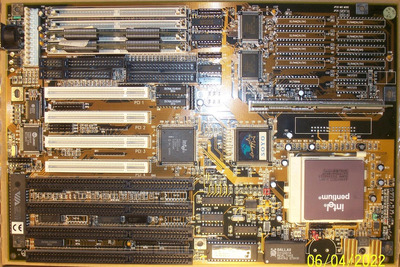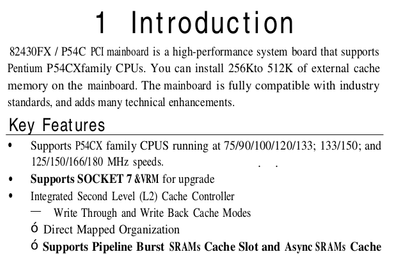First post, by majestyk
- Rank
- Oldbie
I expected this socket 5 Asus mainboard with Intel 430FX chipset to be quite troublefree, but I was wrong.
First I replaced the DALLAS RTC, added the PS2 Mouse-Connector and added the connector for a VRM module plus the necessary jumpers. With the latest BIOS (302) it detects a Pentium MMX 233 correctly (BF1 mod had to be done before of course).
O.k., time to add some L2 cache I thought and populated the sockets first with 8 chips 32Kx8 and 8Kx8 for TAG-RAM and later with 8 chips 64Kx8 and 32Kx8 for TAG-RAM.
I also tried different sets of chips of different brands.
There is one jumper to select 256K or 512K on this board, but the result is always the same:
When turned on after POST the summary screen says "Cache Memory : none" and then boots into DOS fine (with no L2 cache present).
When I reset the board then, the cache size is detected correctly, but after the floppy drive has made two initial clicking noises it stops and no OS is being loaded.
There´s also a MR. BIOS BIOS for this board. It´s a little bit more verbose and complains with errors:
"0K Cache" and
"Cache Pattern Test Failure" after a cold start or
"Cache Address Line Test Failure" after a reset.
resulting in "External Cache n/a" at the summary screen.
I have checked all the traces in this area carefully, also checked the pins of the northbridge, but I cannot find any visible defects.
I have had errors like this quite often, but this always used to be caused by defective (or too slow) cache chips, bad contacts, wrong size or organisation of the TAG-chip or wrong jumpering. None of this seems to apply here...
The error is NOT dependant of the frequency (FSB 33, 40, 50, 60, 66) nor of the temperature. Pressing or flexing the board has no effect either.

